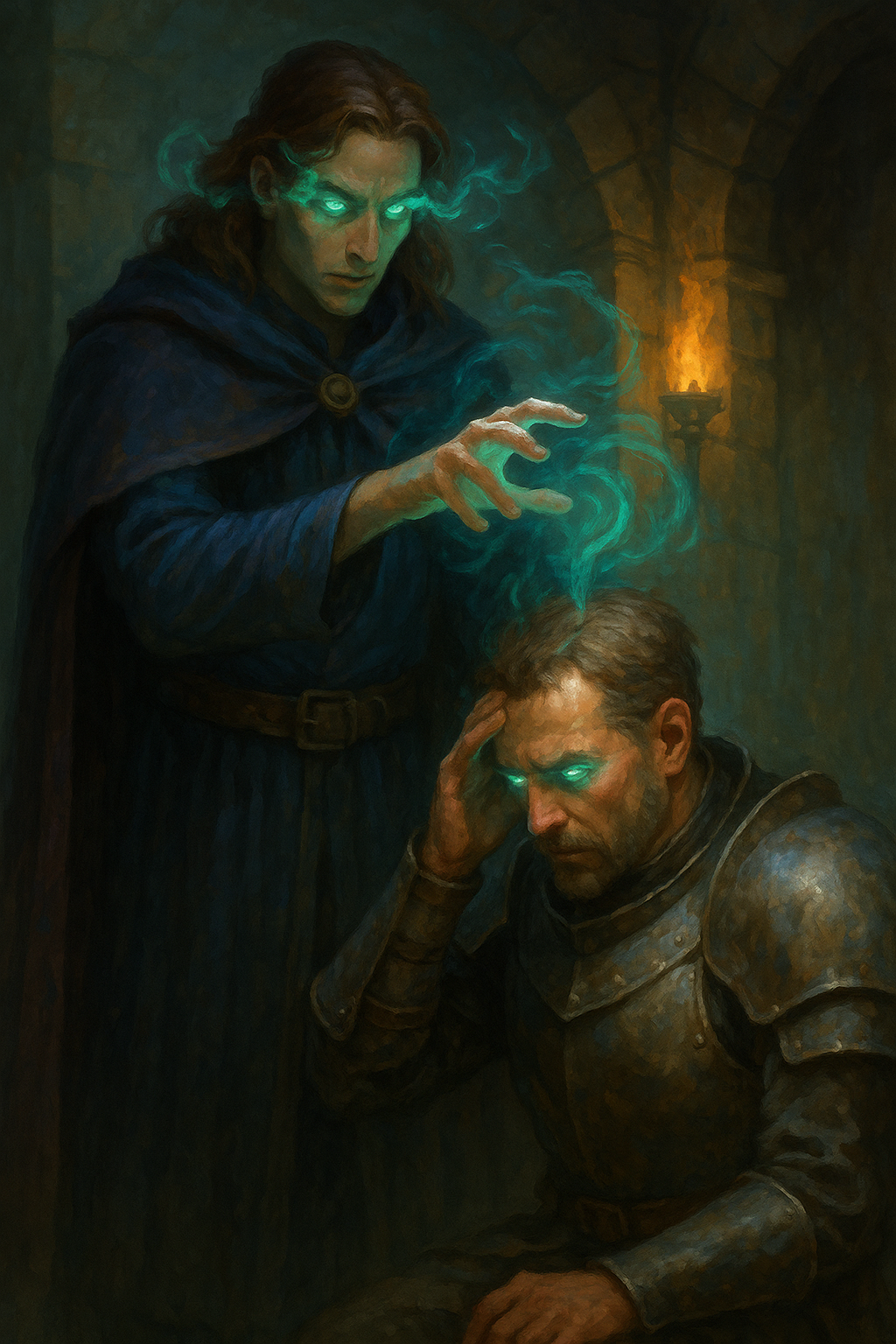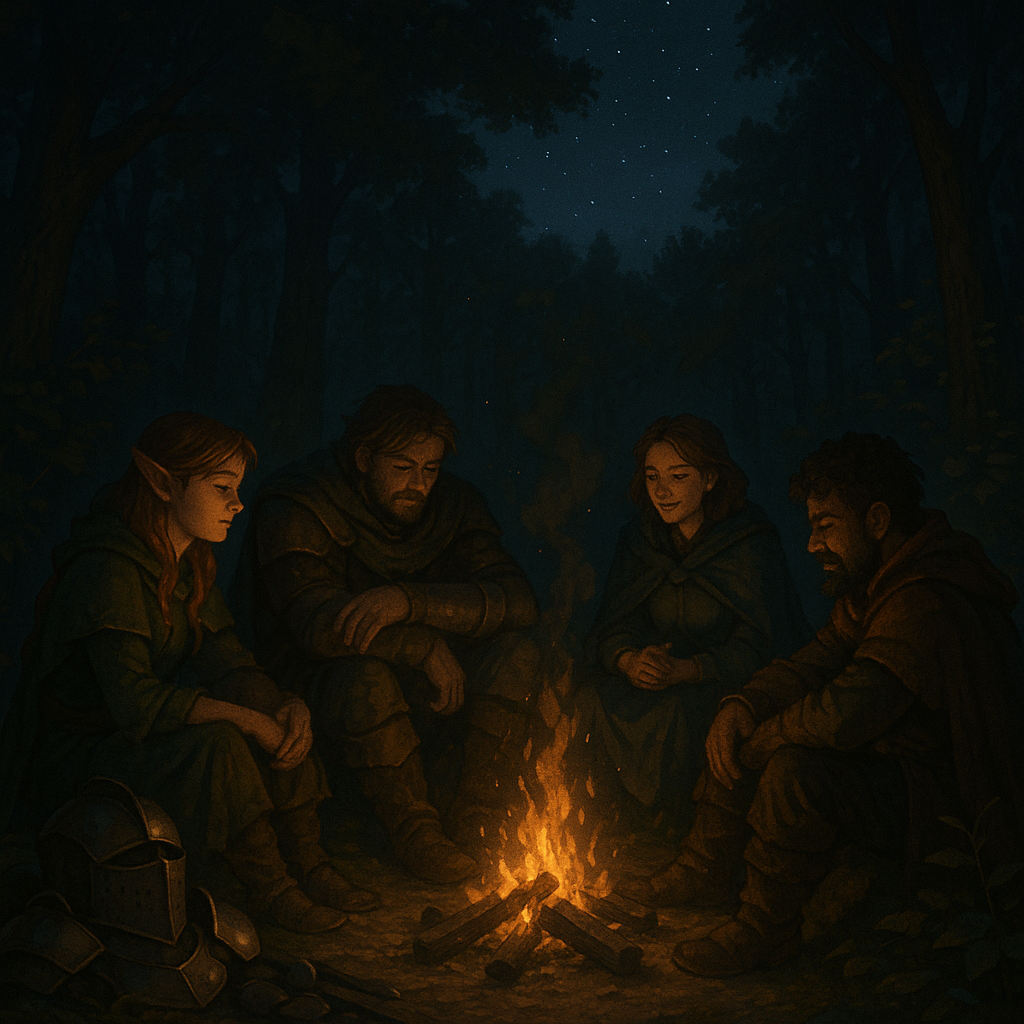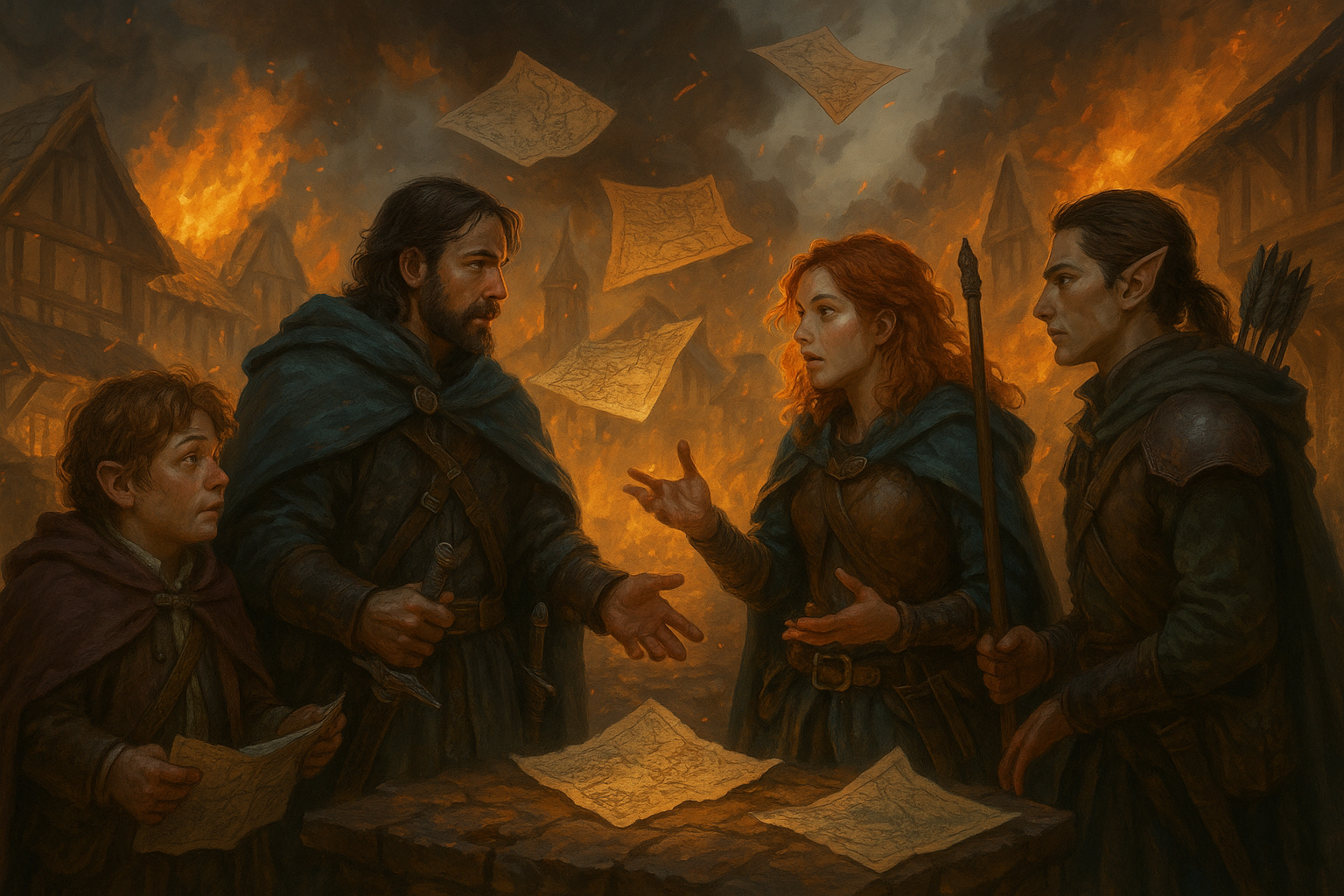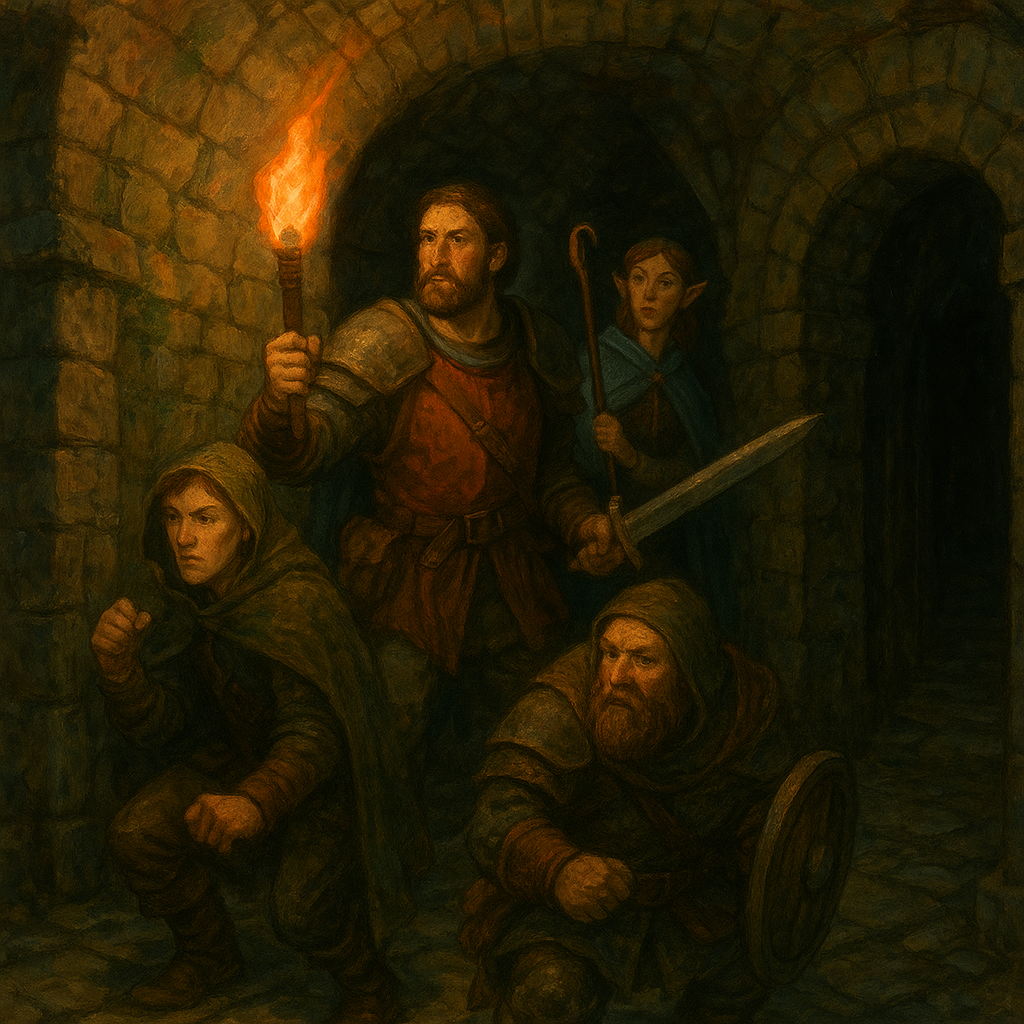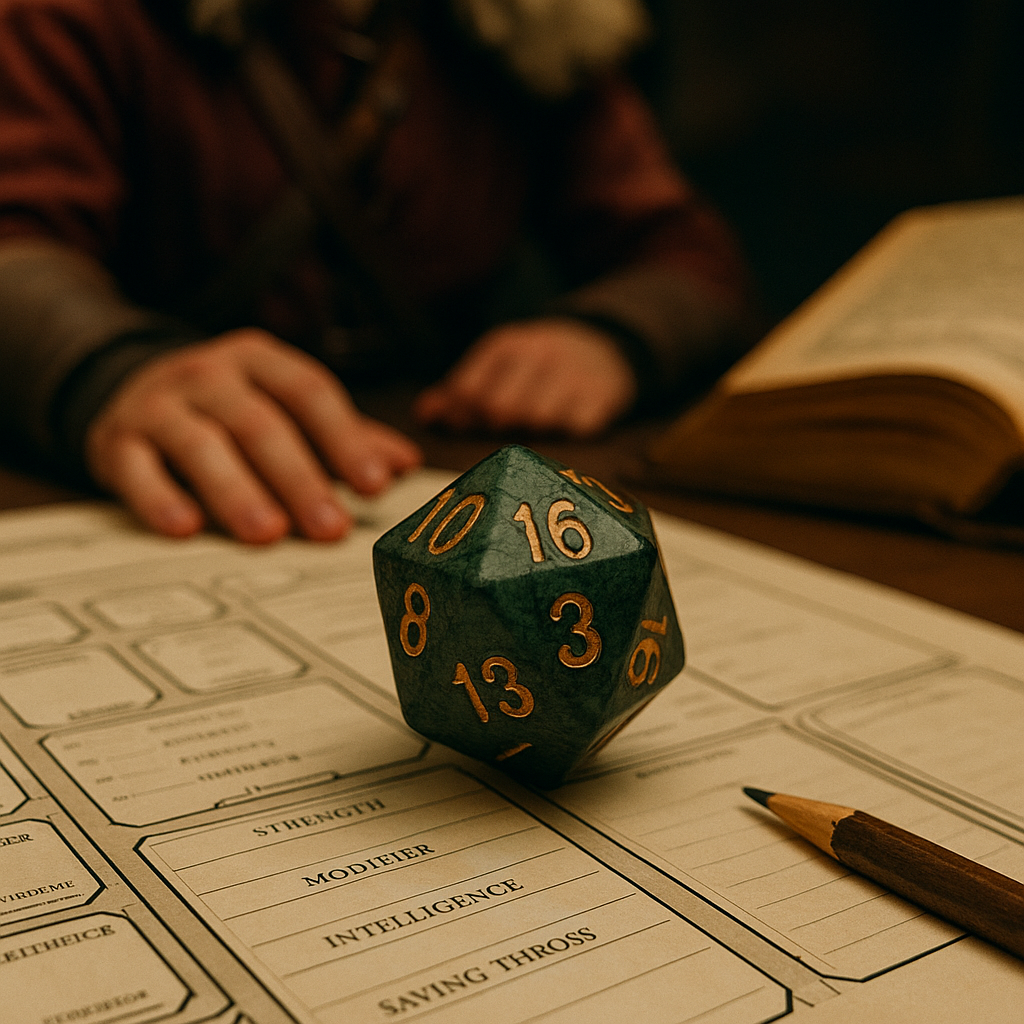Time Pressure Mechanics: Building Tension Through Real-Time Choices
Time is a valuable thing...and it's coming to get you

Dear Readers,
Today, we’re diving headfirst into a topic that can take your Dungeons & Dragons sessions from tense to pulse-pounding: Time Pressure Mechanics. Specifically, how to build real-time tension that keeps players on the edge of their seats, sweating over every decision.
Time is an illusion in most tabletop games. We play for hours, but our characters might only experience minutes. That disconnect can dilute urgency. But when time becomes a character in your campaign—a looming threat, an unpredictable force, a dwindling resource—everything changes.
This post breaks down the core principles behind time pressure mechanics, offers practical methods to implement them in your D&D game, and shares advanced tactics for maximizing emotional and narrative impact. We’ll even touch on pitfalls to avoid.
Let’s get to it.
Why Time Pressure Works
Time pressure drives decision-making. In psychology, urgency triggers heightened focus, riskier choices, and more visceral emotions. When players feel the clock ticking, they shift from optimal play to instinctual play. That shift brings:
- Increased immersion
- Emotional investment
- Organic character development
- Memorable moments
This isn’t about punishing players. It’s about heightening stakes and shifting the game’s rhythm. Time pressure forces players to make hard choices and live with the consequences.
Core Forms of Time Pressure in D&D
There are three main forms of time pressure mechanics in a tabletop RPG:
1. In-World Timers (Diegetic Time)
This is time that exists within the narrative:
- A bomb will go off in 60 seconds.
- The portal closes in 3 rounds.
- The vampire flees at dawn.
In-world timers have a visible cause-and-effect. They build urgency while reinforcing the world’s logic.
2. Meta Timers (Real-Time Constraints)
These exist outside the fiction:
- You have 30 seconds to decide your action.
- Solve this puzzle in real-time or it auto-fails.
- Combat encounter ends in 15 real-time minutes.
Meta timers push players themselves. They introduce genuine pressure, which bleeds into character tension.
3. Narrative Impacts of Delay (Consequential Delay)
Here, time doesn’t tick down, but the longer players take, the worse things get:
- Every minute spent searching lets enemies regroup.
- Each long rest allows a villain to advance their plan.
- Ignoring the plague accelerates its spread.
These mechanics reward speed and punish indecision, without enforcing explicit countdowns.
Tools for Implementing Real-Time Pressure
Let’s talk tactics.
1. Sand Timers & Hourglasses
Low-tech, high-drama. Slap a 30-second sand timer on the table when combat starts, announcing it’s the time limit for each player's turn. Watching grains fall is viscerally stressful.
2. Countdown Sound Effects
Play a ticking clock or rising music to simulate pressure. Apps like Syrinscape or even YouTube videos work great. Bonus: no explanation needed—players feel the tension immediately.
3. On-the-Fly Timers
Surprise players with a real-time constraint: "You triggered a trap! You have 20 seconds to describe how you disarm it or it goes off." Use sparingly for max impact.
4. Pre-Planned Countdown Events
Design scenarios where players know they’re racing the clock:
- Escape a flooding dungeon in 5 minutes.
- Negotiate a truce before a riot erupts.
- Deliver a cure before nightfall.
Advertise the countdown clearly and stick to it.
5. Ticking Clocks Behind the Scenes
Keep private timers running to track external events. Let players discover consequences later. This method rewards cleverness but keeps the pressure subtle.
6. Combat Time Limits
Enforce a 30-60 second real-time limit for each player’s combat turn. This cuts analysis paralysis and injects urgency into battle. Be forgiving early, but consistent.
Case Studies: Time Pressure in Action
Case Study 1: The Crumbling Temple
Scenario: A temple begins collapsing during a boss fight.
- Every 2 real-time minutes, a piece of the map is removed.
- After 10 minutes, the roof collapses.
- Players must fight and escape before that.
Result: The countdown forces quick thinking and prioritization. Players might skip loot or sub-optimal attacks in favor of survival.
Case Study 2: The Political Summit
Scenario: A summit of rival factions devolves into chaos.
- Each 5 minutes of real-time inaction sees one NPC leave.
- Too many departures and war breaks out.
Result: Roleplay becomes snappy. Players can’t monologue endlessly. Every second counts.
Case Study 3: The Cursed Vault Puzzle
Scenario: A puzzle chamber opens. If not solved in 10 real-time minutes, the door seals forever.
- Players get clues, tools, and pressure.
- Timer is visible.
Result: Collaboration spikes. Table gets tense. Win or lose, they remember the stress.
Building Custom Time Pressure Scenarios
Here’s a framework for building your own:
Step 1: Define the Stakes
- What’s the consequence of failure?
- What happens if they stall too long?
Step 2: Set the Clock
- Will it be in-world, real-time, or both?
- Will players see the clock?
Step 3: Balance Fairness and Pressure
- Do they have enough info to act?
- Can they fail with dignity?
Step 4: Communicate Clearly
- Announce the rules. Don’t spring time limits unfairly.
- Build anticipation: "You’ll have 2 minutes to negotiate once the king arrives."
Step 5: Adapt on the Fly
- Don’t be rigid. If tech hiccups or confusion happens, pause or rewind.
- The goal is tension, not punishment.
Advanced Time Pressure Techniques
1. Nested Timers
Stack multiple time pressures:
- Solve a puzzle in 5 minutes while avoiding traps that trigger every 30 seconds.
- Rescue captives before the guards return in 3 minutes.
2. Unknown Countdown
Don’t reveal the timer.
- "Something is coming. You feel it."
- Let players panic not knowing how long they have.
3. Pressure-Driven Roleplay
Use time pressure in social encounters:
- A king’s attention is fleeting.
- An angry mob grows louder every minute.
- The rogue needs to forge a document while under watch.
4. Real-Time Escape Rooms
Build entire sessions around time-limited scenarios:
- Prison break.
- Heist with shifting security.
- Ritual disruption before it completes.
These work especially well in one-shots or session finales.
Avoiding Common Pitfalls
Pitfall 1: Overusing Real-Time Stress
Players burn out fast. Use sparingly. Let tension rise and fall naturally.
Pitfall 2: Unclear Expectations
If players don’t know the rules, they’ll feel cheated. Transparency creates buy-in.
Pitfall 3: Penalizing Thoughtful Players
Give players space outside time-limited segments to strategize. Real-time pressure should be a flavor, not a diet.
Pitfall 4: Technical/Physical Limitations
Online games may lag. Players may need accessibility accommodations. Be flexible and empathetic.
Pitfall 5: Binary Failures
Make sure failure isn’t a dead-end. Maybe the vault door seals but there’s a secret exit. Maybe the villain escapes but leaves a clue. Failure should move the story, not stop it.
Player Buy-In: Making Time Pressure Fun
Time pressure works best when players know it’s coming and see its purpose. Set the tone:
- Session Zero: Mention you may use real-time elements.
- Pre-Session Reminders: Give heads-up before major time pressure sessions.
- Debrief Afterward: Talk about how it felt, what worked, what didn’t.
Make it collaborative. Some players love chaos. Others freeze. Calibrate your group’s tolerance.
Time Pressure in Other Genres
Horror Campaigns
Time mechanics boost dread. "It’s getting closer" is more terrifying when players have 3 minutes to escape.
Heists
Nothing says tension like a guard rotation every 90 seconds. Make blueprints and clocks part of the plan.
War Campaigns
Track fronts shifting. Delay long enough and your side loses ground. Create consequences for inaction.
Survival Games
Time until the next sandstorm. Time until food runs out. Use resource scarcity + time limits to create tough choices.
Templates You Can Use Today
Template: Timed Puzzle Room
- 10-minute countdown.
- Puzzle requires 3 steps.
- Each 3 minutes, a penalty (gas, fire, enemies).
Template: Political Showdown
- 5 real-time minutes to make case.
- Each PC has 1 minute of uninterrupted speech.
- Afterward, NPCs vote immediately.
Template: Combat Countdown
- Fight ends in 15 minutes.
- Each player gets 45 seconds per turn.
- Add dynamic hazards every 3 rounds.
Template: Heist Escape
- Alarm triggered.
- Every 2 minutes, new guards arrive.
- After 10 minutes, escape route is blocked.
Wrapping Up: Why It Matters
Time pressure mechanics aren’t about being mean. They’re about adding texture to your sessions. They make moments feel earned. Failures sting more. Victories hit harder. Players remember the tension more than the treasure.
Done well, time pressure becomes another tool in your DM kit—like maps, music, or minis. Use it to shape emotion, test character, and drive urgency.
Don’t fear the clock. Use it.
Until next time, Dear Readers...

















